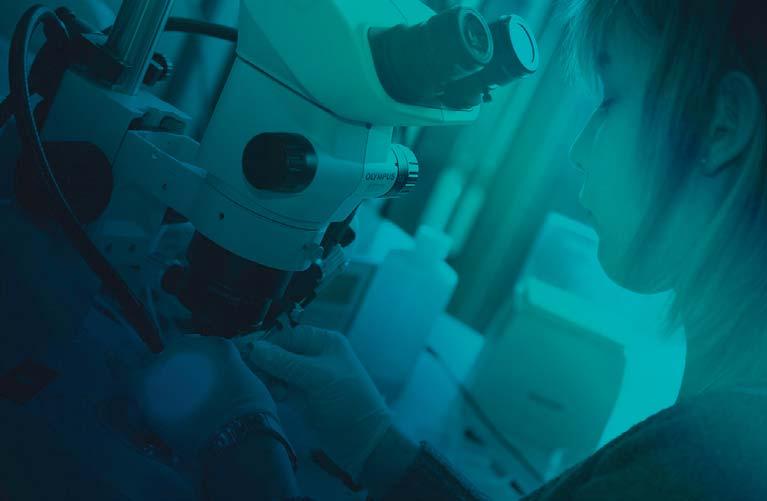Interview with Prof. Jean-Luc BALLIGAND, President of the Institute for Experimental and Clinical Research (IREC), Catholic University of Louvain (UCLouvain), WELBIO investigator used to transport water and hydrogen peroxide, an oxidant responsible for reactions leading to cardiac hypertrophy. We were able to verify in biopsies of human hearts that aquaporin 1 was more abundant in people with large hearts. We have also identified a potential treatment that blocks the aquaporin 1 channel and hydrogen peroxide transport to prevent cardiac hypertrophy. This treatment is brahmi, a plant extract used in indian ayurvedic medicine that contains a molecule (bacopaside) that very effectively blocks aquaporin-1. Its efficacy to prevent hypertrophyhas been verified in a preclinical model with a standardized plant extract already available in parapharmacy. Indeed, this standardized extract (CDRI08) has already been tested in randomized controlled clinical trials for its therapeuic efficacy in various neurological disorders. The next objective here is therefore to reposition an existing treatment in a cardiovascular indication and the recent subsidy granted by the King Baudouin Foundation will enable us to launch a pilot clinical study soon.
W
hat are IREC's key figures and research themes? IREC is strong with 233 Clinicians (22 Academics, 231 Scientists, and 97 Admin & Technical Staff). Between 2015 and 2020 the Institute produced 4,800 scientific publications and it totals 19 patents and licenses over the period 2015-2019. In addition, it is at the origin of the creation of two spin-offs. Research at IREC is organized into 11 thematic research groups: cardiovascular, imaging, clinical and translational immunology, acute medicine, regenerative medicine, metabolism, obesity and diabetes, health and movement, nephrology, oncology, reproductive medicine, and medical microbiology. Added to this are the activities of the Clinical Trial Center and the platforms (2IP, CytoFlux, CTMA - Centre for Applied Molecular Technologies).
What are the main assets of research at IREC? IREC is developing translational research straddling the line between very high-flying basic science and clinical research for patients: the back and forth between problems encountered at the patient's bed and hypotheses tested in the laboratory creates a virtuous circle allowing discoveries to be transformed into new diagnostic tests and treatments for personalized medicine. Another strength of research at IREC is its transdisciplinary aspect: cross-fertilization between different disciplines is an important source of innovation. Indeed, biology does not care about disciplinary boundaries and many cellular mechanisms are common to different organs and pathologies. Ultimately, this transdisciplinarity allows us to go beyond the organic vision of disease and adopt a holistic approach.
In your opinion, what are the major challenges of tomorrow's translational research? The first challenge concerns research funding, which is threatened by the current economic difficulties of which culture and research are traditionally the first victims. This period is also unfavorable for collaborations with the industry, which risks harming our level of competitiveness. The second challenge relates to integration into major national, European and international research networks in order to remain competitive. Belgium's political fragmentation affects the critical mass and visibility of its research. This could be overcome by the creation of alliances between European universities, such as CircleU3. Finally, medical research faces a third challenge, which is the increasing complexity of diseases: a single treatment is not sufficient to treat patients with co-morbidities and environmental factors that in turn influence the efficacy of treatments. There is a need for integration of multi-modal phenotypic data using algorithms of artificial intelligence to uncover new disease mechanisms and treatments, i.e. a “Network Medicine” approach4. To implement this, it is crucial to maintain the virtuous circle of translational research by maintaining a constant dialog between multidisciplinary basic and clinical researchers. Allowing caregivers to free up clinical time to develop their basic research skills is one mission of our Institute towards that goal.
Could you give us some examples of current research projects at IREC? In the treatment of cancer, biopsy samples have been used to reconstitute mini-tumors in vitro for genomic, proteomic and metabolomic analysis. Artificial intelligence is then used to determine the most effective treatment for a given tumor, verify its efficacy and validate it for application to the patient concerned. In the field of cardiovascular diseases, we have discovered a new biomarker of blood vessel function in cells and animals carrying these diseases. This new biomarker is currently being used on human patients in prospective studies for the prediction of cardiovascular disease complications. On October 7, we published an article on cardiac hypertrophy in Science Translational Medicine entitled “Inhibition of aquaporin-1 prevents myocardial remodeling by blocking the transmembrane transport of hydrogen peroxide“1. In the framework of a WELBIO2 research programme, we found that mice deficient for the gene coding for aquaporin-1 developed small hearts. Aquaporin 1 is a protein
https://uclouvain.be/en/research-institutes/irec https://welbio.org/cms/c_11740011/fr/welbio
https://uclouvain.be/en/research-institutes/irec/news/brahmi-plant-extract-prevents-cardiac-hypertrophy.html https://welbio.org/cms/c_11740011/en/welbio 3 https://www.circle-u.eu/ 4 https://www.network-medicine.org/ 1 2
158
© IREC
Translational research for the benefit of patients

















































































































